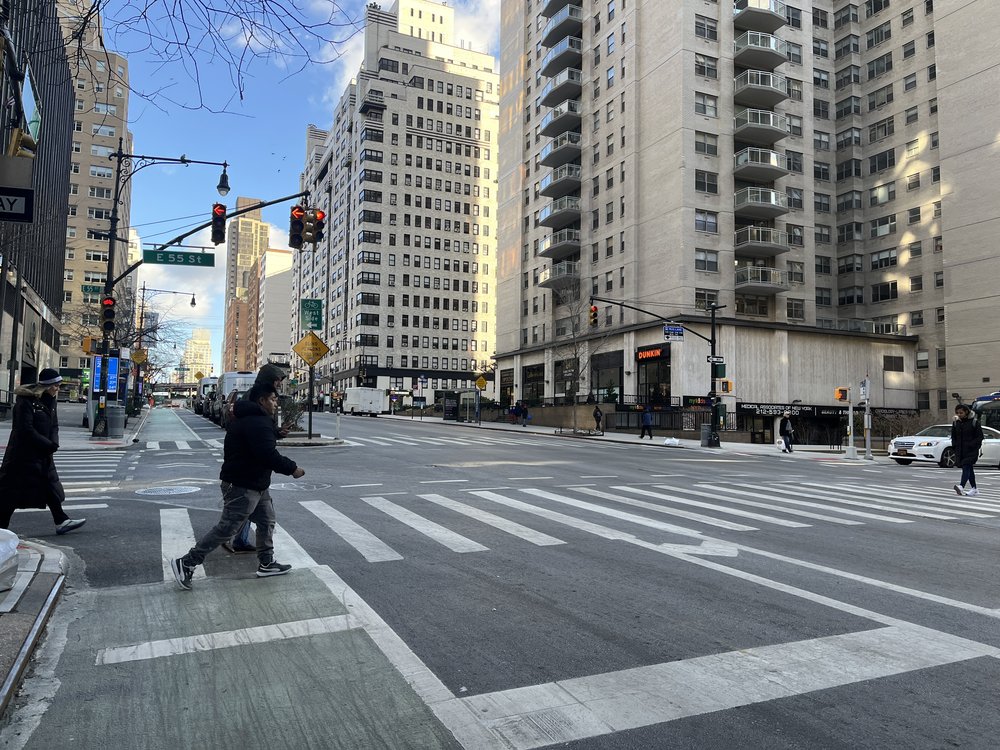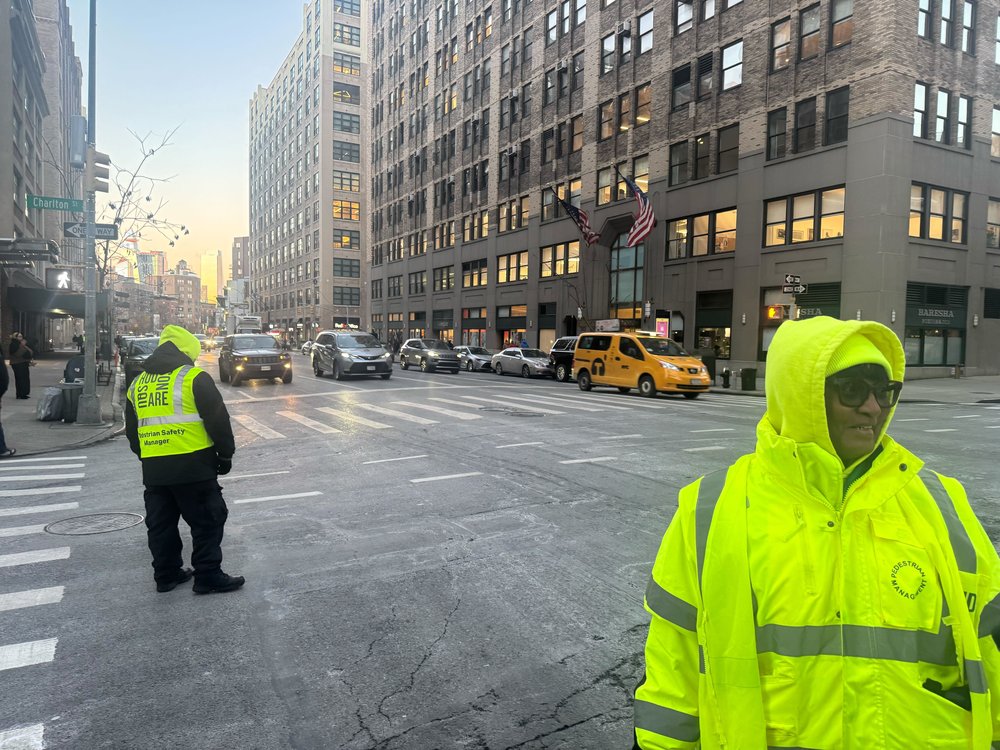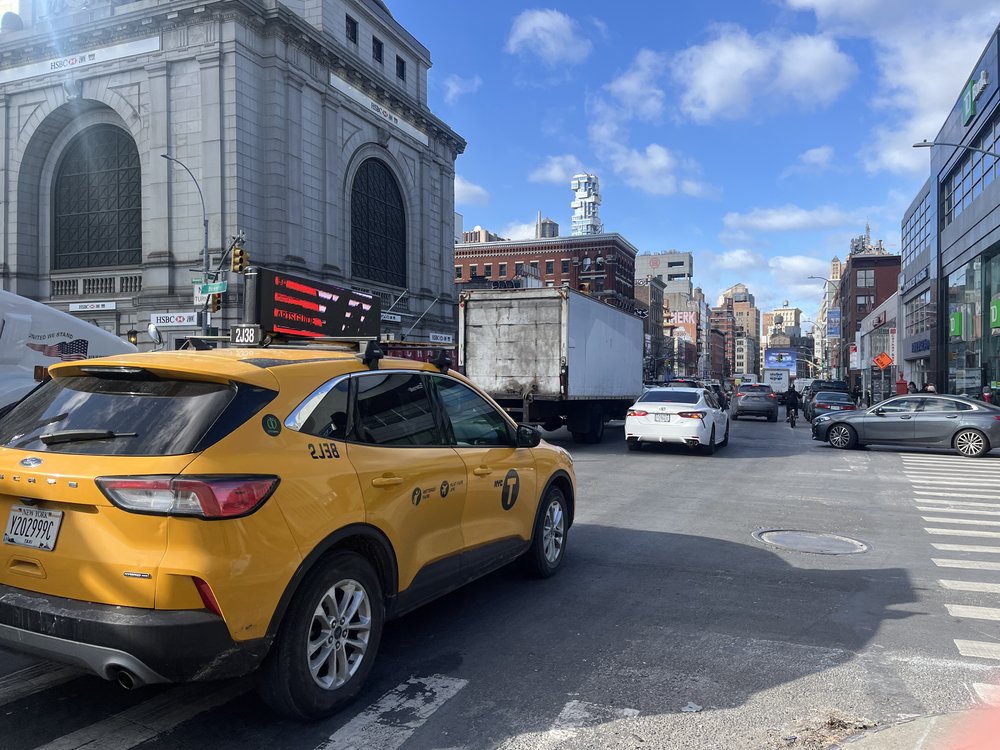In first days of congestion pricing, New Yorkers see signs of reduced gridlock
Jan. 8, 2025, 3:53 p.m.
Experts warn it's too early to tell what impact the tolls are having on Manhattan's notorious gridlock, but the view from the streets shows signs the program could be working.

Although New York City's congestion pricing program is less than a week old, there are early signs that it is already accomplishing its primary goal of reducing Manhattan’s gridlock, which is among the worst in the world.
The MTA and the city's transportation department are closely monitoring traffic data to see how driver behavior has changed since Sunday, when tolls were first imposed for cars entering Manhattan south of 60th Street.
But Shirley Matthews, whose job as a traffic director on Varick Street just north of the Holland Tunnel usually requires her to corral thousands of unruly New Jersey-bound drivers into an orderly line, said she’s never seen Manhattan’s streets so calm.
“We’re shocked. I never expected to see this, and I’ve been in New York almost 45 years,” said Matthews. “It’s a pleasure to not have to explain to the drivers that you have to wait your turn.”

The data from the first few days of congestion pricing is a mixed bag. The traffic analysis firm INRIX found traffic speeds within the congestion zone hovered between 11.3 and 12 mph on Tuesday, roughly the same as a comparable day in January last year. But there were some exceptions: During the evening rush on Tuesday, the traffic on FDR Drive flowed at an average speed of 28.2 mph, a whopping 55% higher than the 18.2 mph INRIX reported during a comparable evening rush last year.
The MTA estimates the tolls will reduce the number of cars entering Manhattan every day by roughly 11% in the long term. Still, experts say it’s far too early to determine whether the tolls are discouraging drivers from entering Manhattan as the MTA hopes.
“We have variable traffic day-to-day, so we just have to kind of let this play out to a certain extent,” said Bruce Schaller, a traffic analyst who’s studied Manhattan gridlock. ”You can kind of go down a list of ways that people might themselves experience the change.”
- heading
- The cost of congestion pricing
- image
- image
- None
- caption
- body
The MTA’s congestion pricing tolls went live on Jan. 5. Here are key aspects of the tolling scheme south of 60th Street in Manhattan:
- A $9 fee on passenger vehicles from 5 a.m. to 9 p.m. on weekdays and from 9 a.m. to 9 p.m. on weekends.
- A 75% discount for all vehicles during the overnight hours, putting the after-hours toll at $2.25.
- A $14.40 toll for smaller trucks, such as box trucks.
- A $21.60 toll for large trucks, including big rigs.
- A $4.50 toll for motorcyclists.
- Yellow and green taxis will be surcharged an additional 75 cents.
- For-hire vehicles such as Ubers and Lyfts will be surcharged an additional $1.50.
- Taxis and app-based for-hire vehicles are expected to pass the cost of the tolls onto passengers.
- Drivers who do not use E-ZPass when entering the congestion zone will pay an extra 50%.
For Joseph Choi, a FedEx driver who was making deliveries on Canal Street on Wednesday morning, the only noticeable change since Sunday was the fact that he must now pay a new toll.
“ It would be much better if I don't pay for it,” said Choi, 50. “I don't see any difference.”

Some residents living near the northern edge of the congestion zone on the East Side said they noticed that it was easier to cross the street.
“It was just hard to see the walk sign, because people [in cars] were in the intersections,” said Susan McManus, 73, who lives in Midtown East. “I can cross across the avenue without there being gridlock.”
Marty Jennings, 78, who runs an electronics repair shop and drives from Forest Hills into Manhattan for work, said he noticed fewer cars on the road this week — but predicted drivers would soon forget about the tolls and the gridlock would return.
“ Get rid of it. It hurts everybody. It hurts garages. It hurts businesses. It hurts people in general," he said. "How do people make up the money that they spend on this?”
NYC plans crackdown on obscured license plates as congestion pricing launches